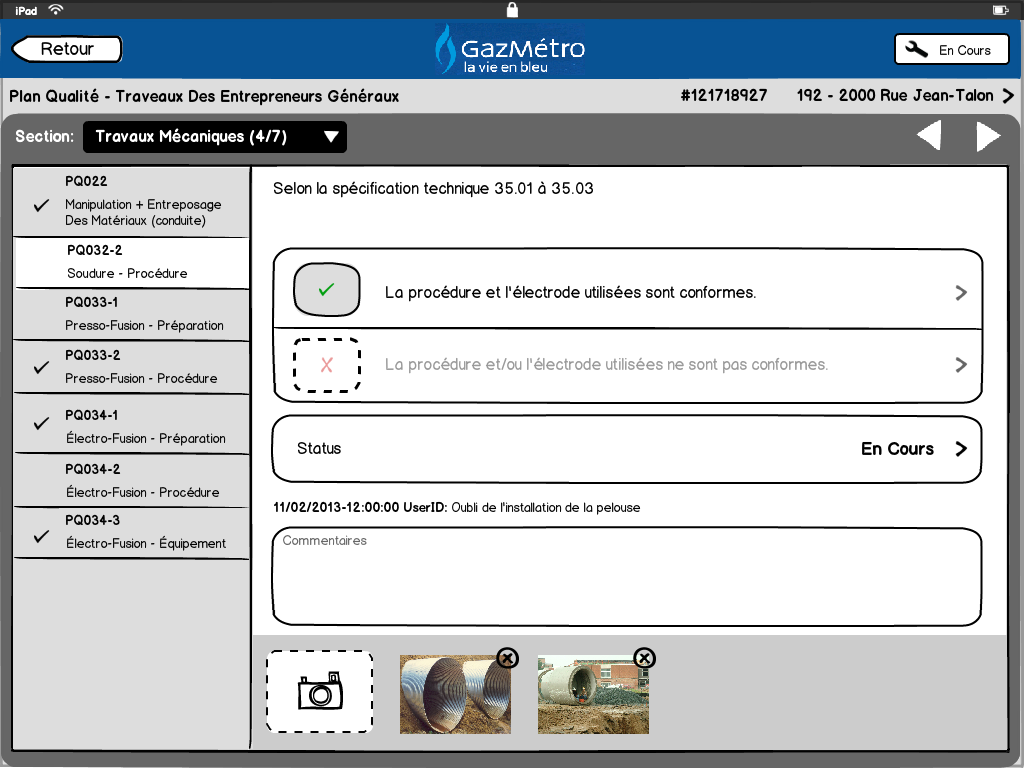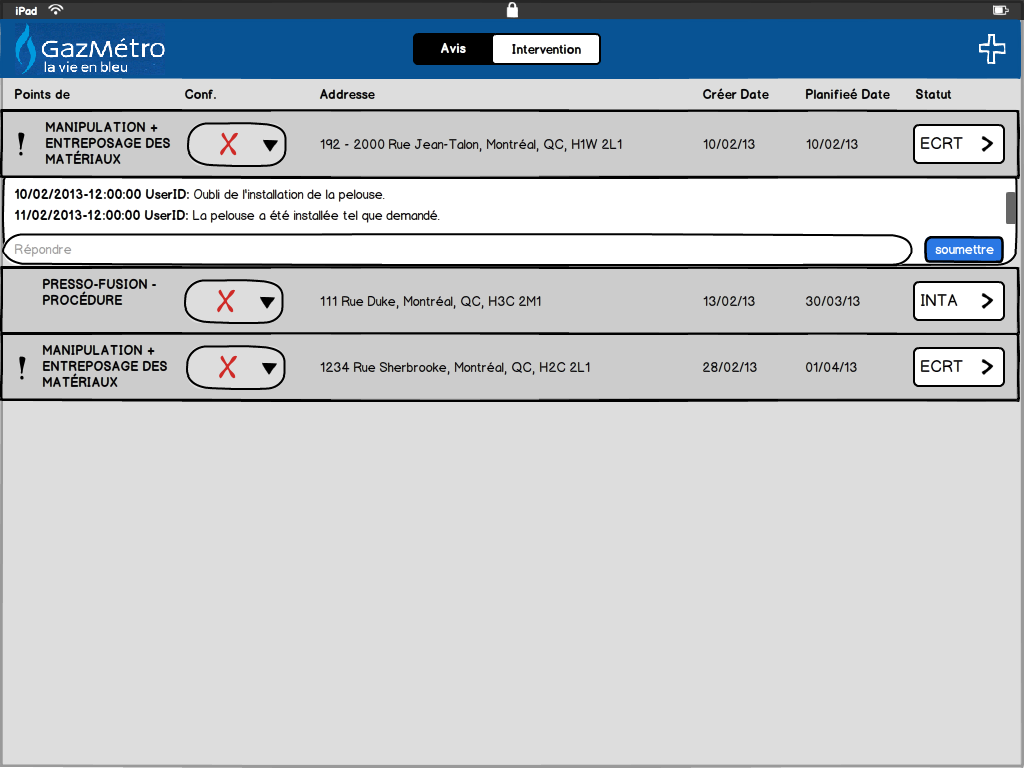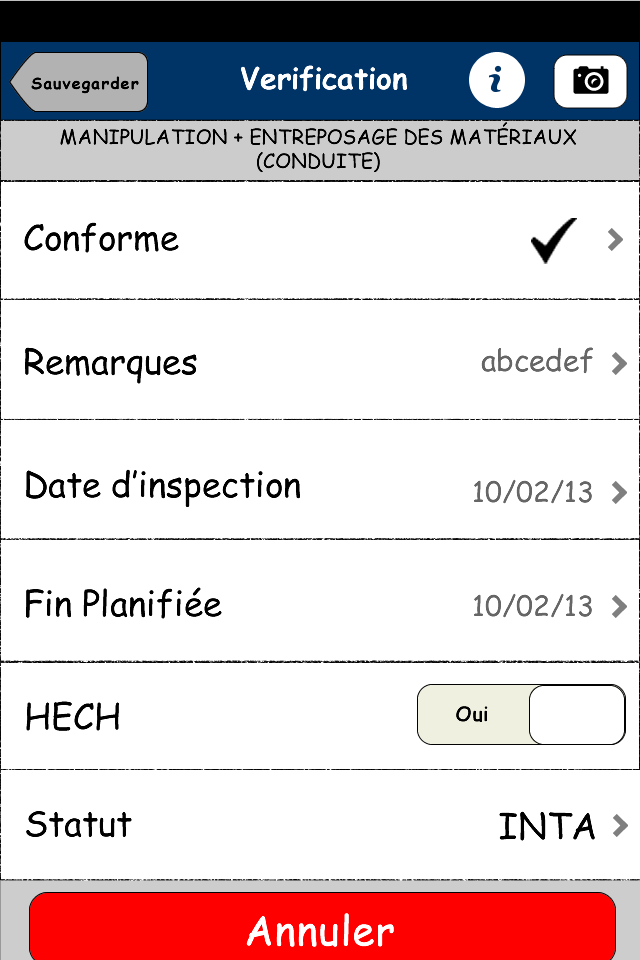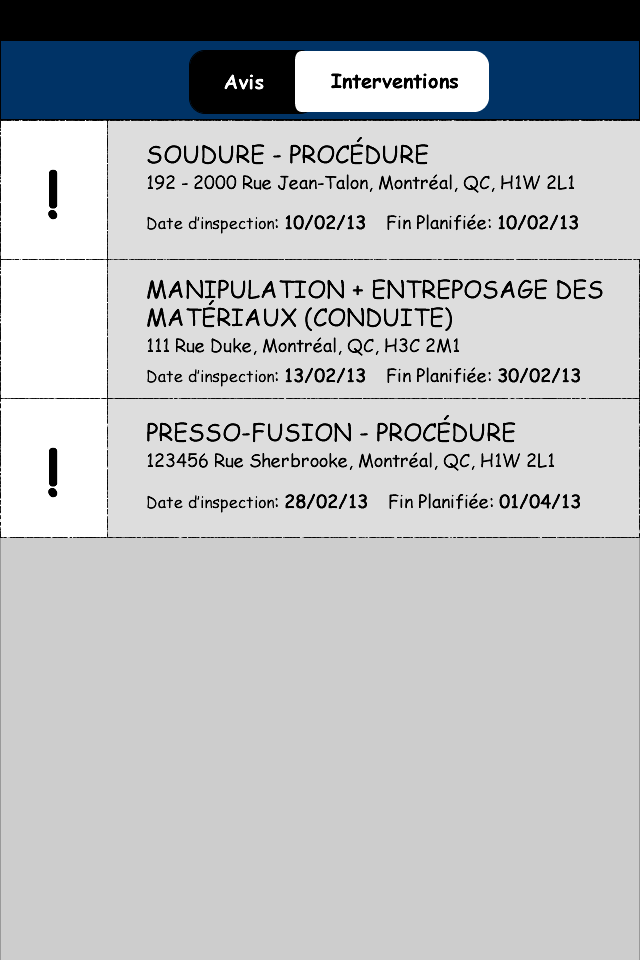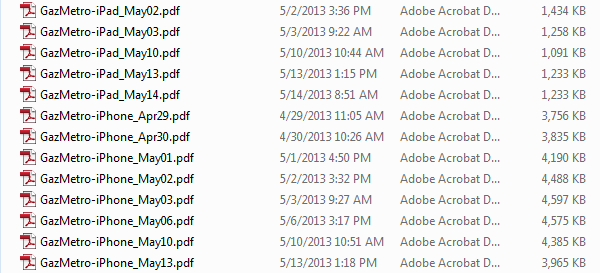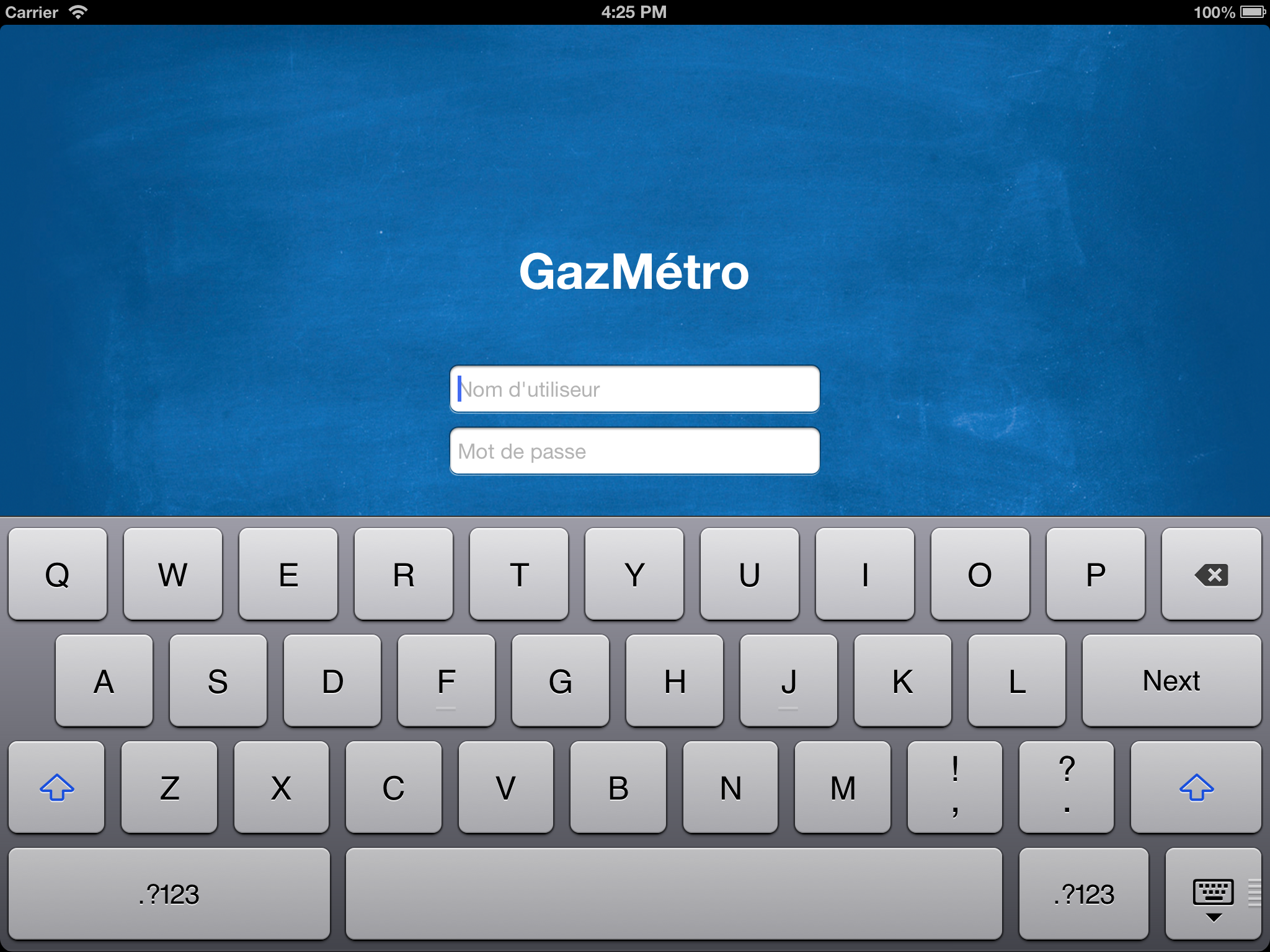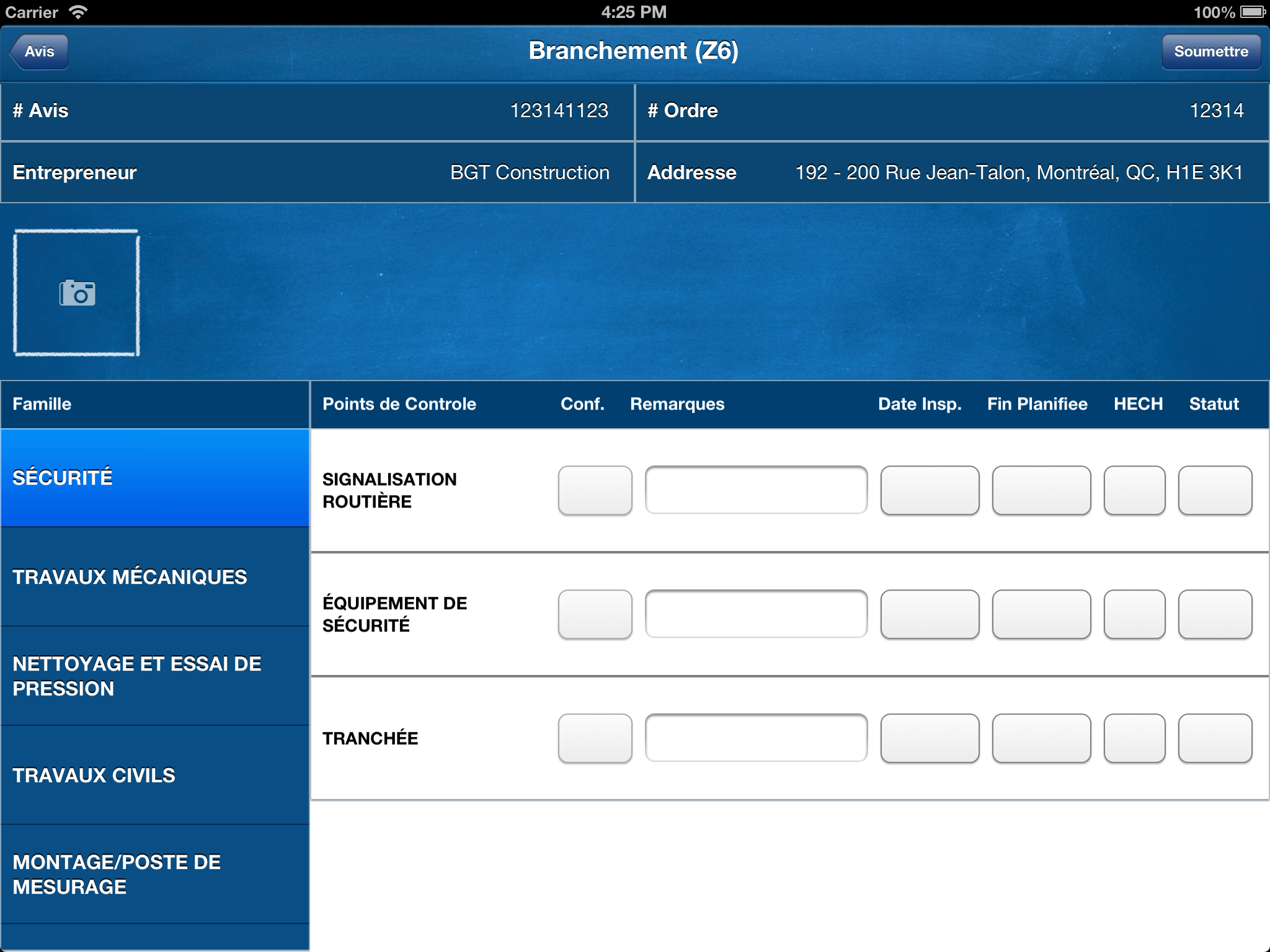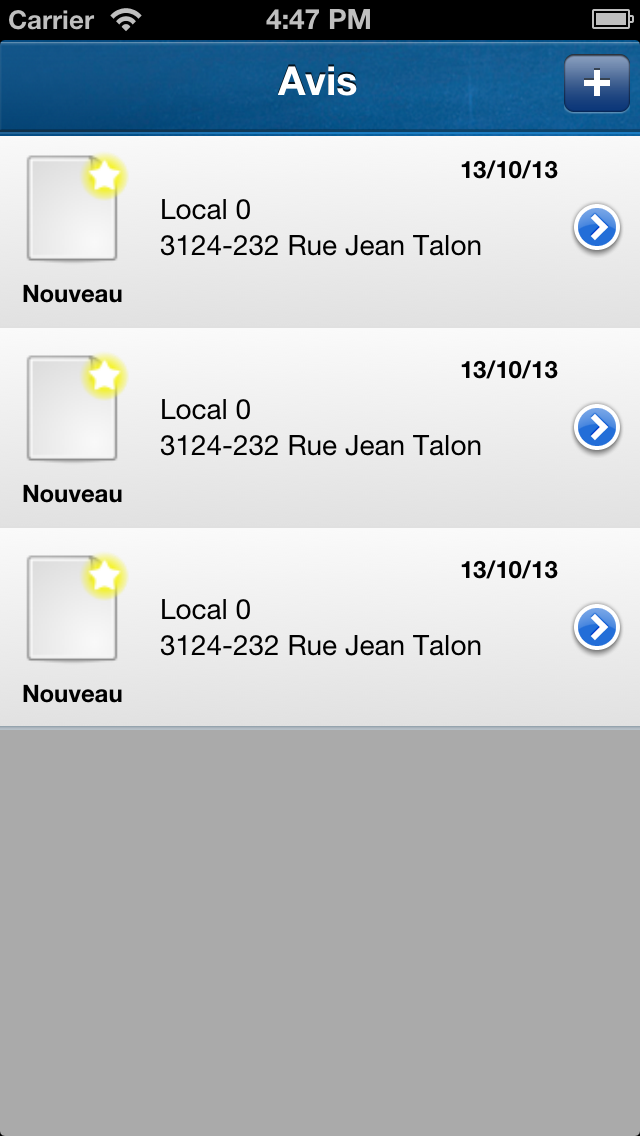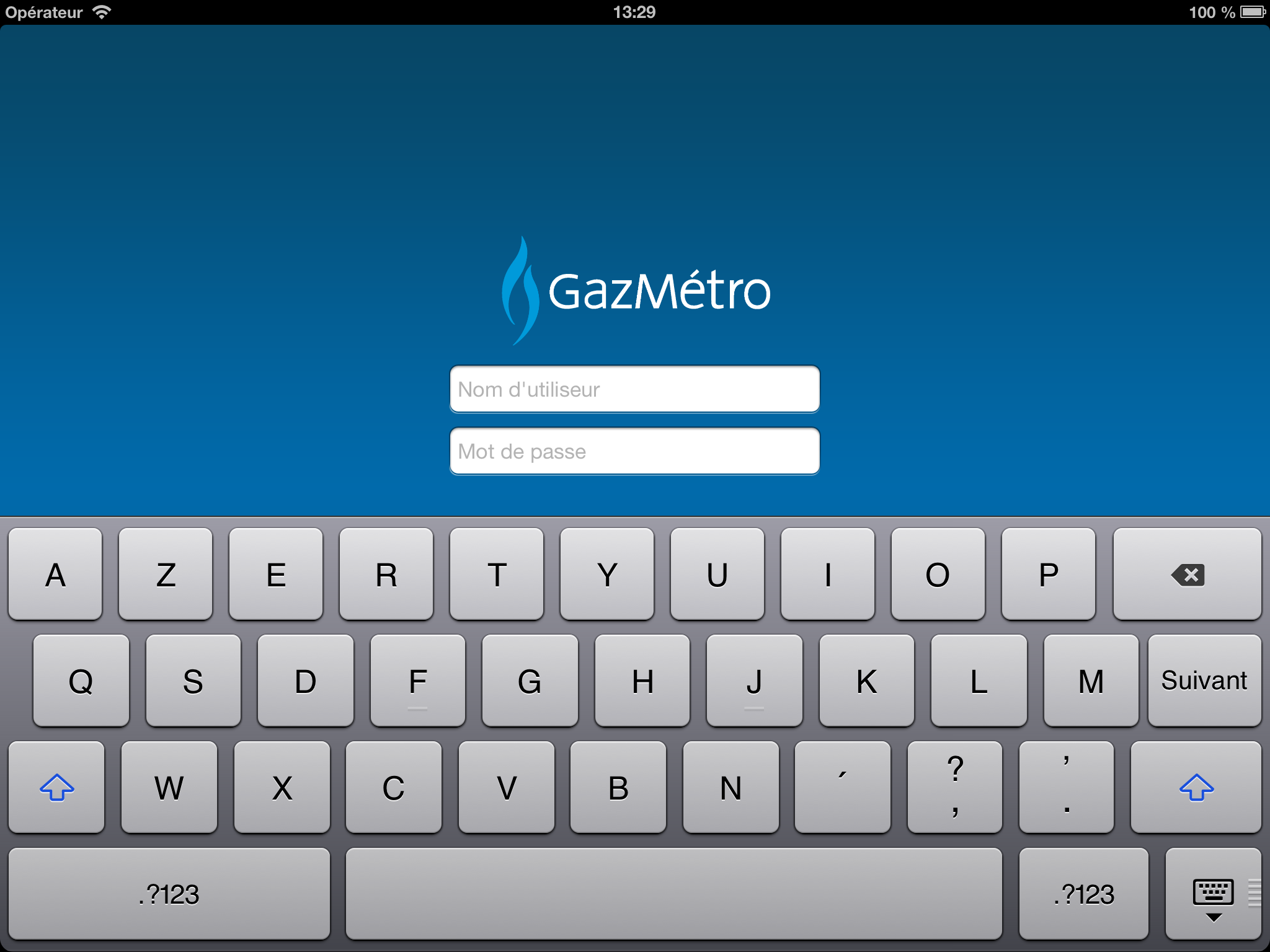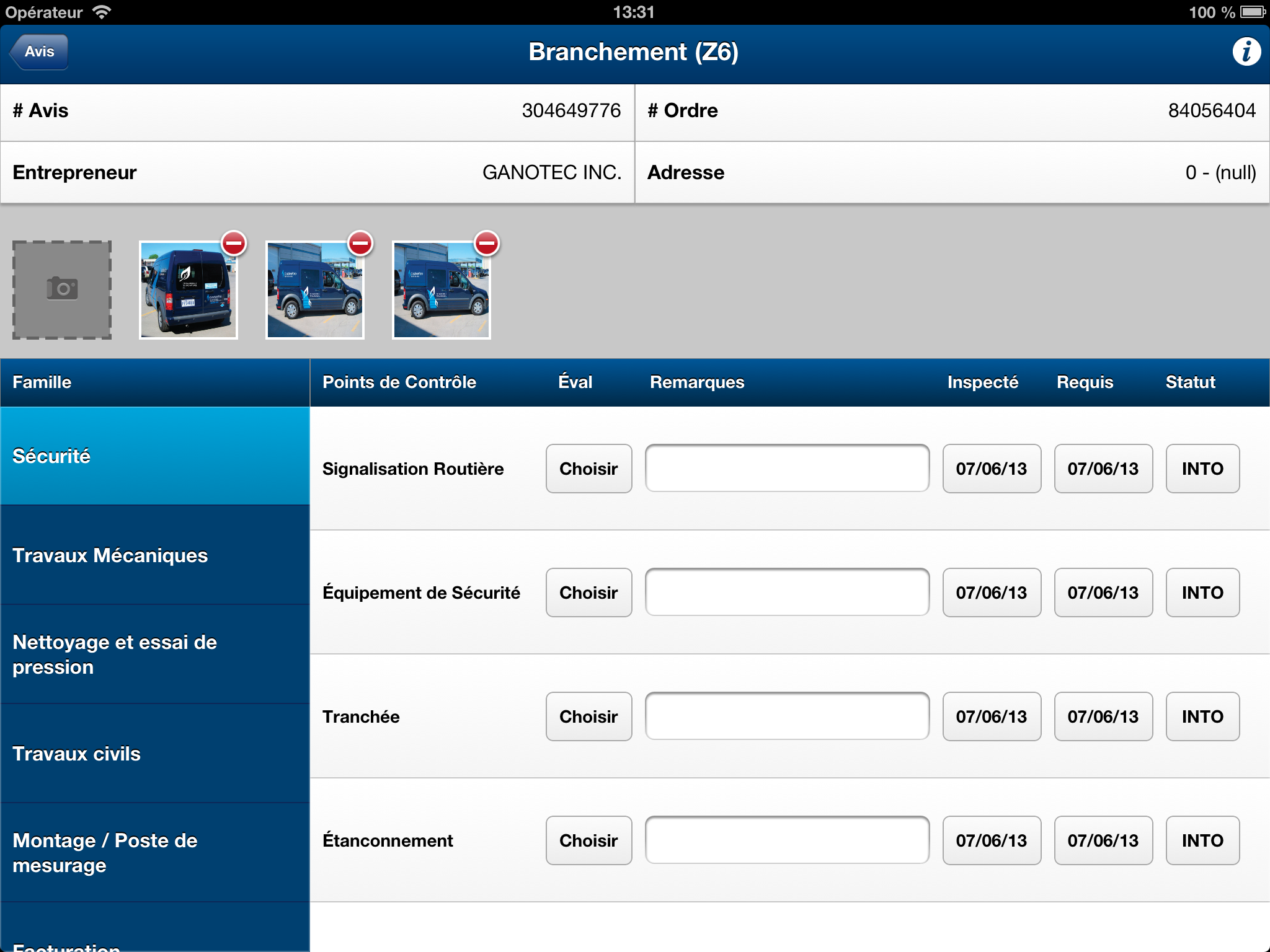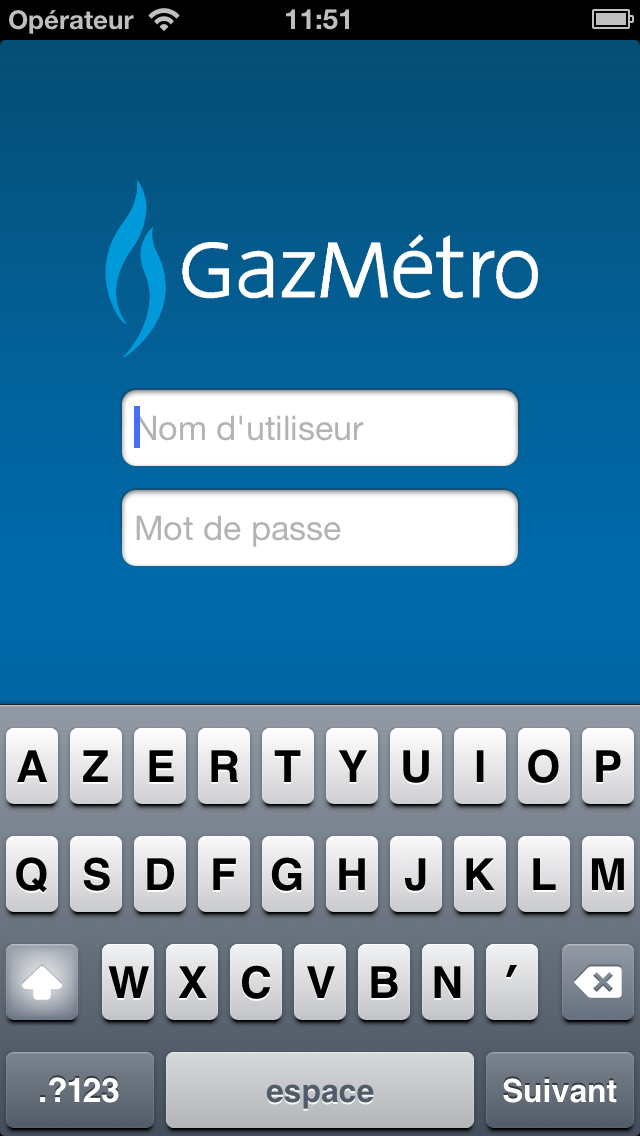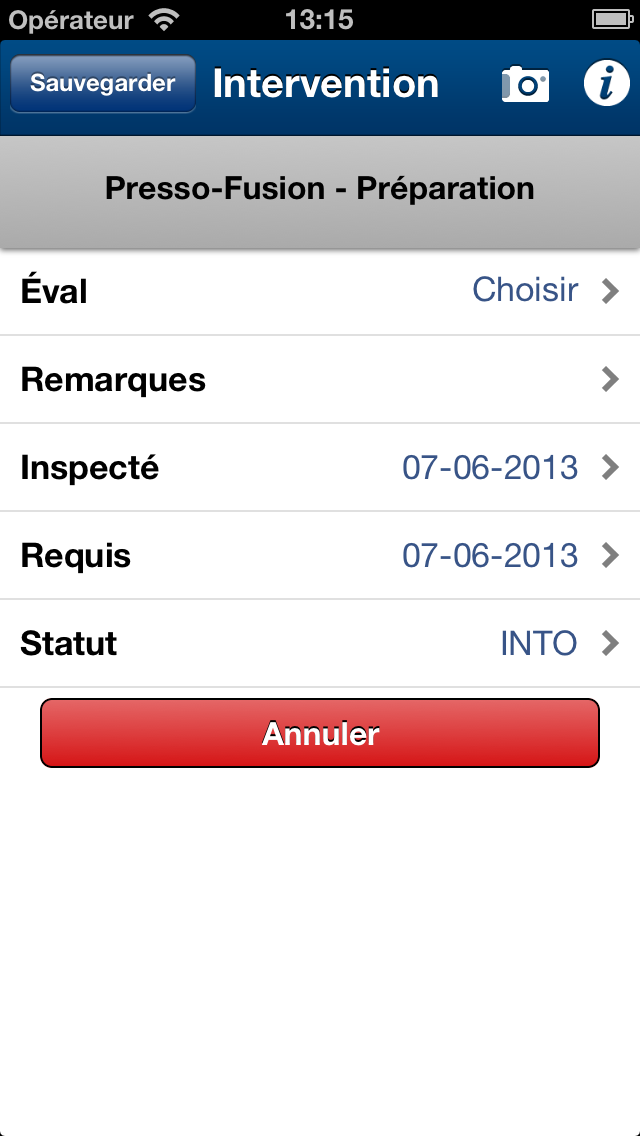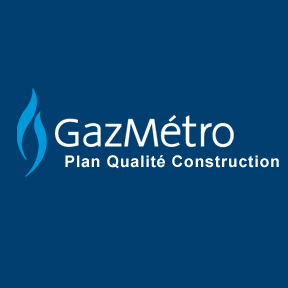
Gaz Métro Qualité Inspections - Native iPad/iPhone
The purpose of this app is to provide Gaz Métro inspectors a portable way of evaluating on-site work completed by contractors. Each day, inspectors are expected to visit work sites and report on the quality of work, especially on issues that may require the contractor to return. To reduce the turn-around time for each inspection, we created an online mobile app for incident reporting with push notifications to handle their needs.
Role: Designer and Developer
Design: 15 days
UI Development: 10 days
Data Development: 8 days
Team Size: 4 people
Project Duration: 3 months
1. Discovery
My involvement in the project started off with a customer facing workshop focused on understanding the customer's needs and ideas for a compliance reporting tool on iOS. In addition to capturing the technical requirements, it was a great opportunity to understand their thought processes, expectations, and experience with mobile applications.
This information was key because the most popular trends in design and interaction for the general public are often not suitable in the technical business world. Our users were trained to expect a certain amount of data to be available at all times and were quite comfortable with paper reporting.
2. Design
After the workshop, we immediately started exploring design possibilities and ideas. I created sketches to lay out my thoughts and exchanged feedback with our customer. We were completely open with them- we felt it was more important for them to understand how we worked instead of trying to impress them with our UX expertise by giving them a polished design.
There were a lot of flaws with what we initially presented, but we were open to suggestions and it was a great opportunity for us to bridge the gaps in understanding. We were able to build trust and mutual respect with the customer by being honest with our work. Our design evolved with customer interaction.
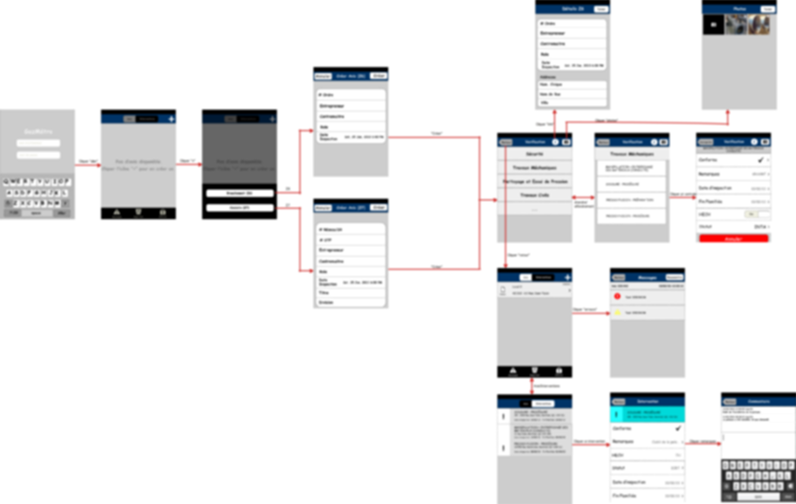
3. Prototyping
Although we had flow charts and diagrams to explain how the app worked, it was a lot easier to show them a tappable prototype. Using Fireworks and TAP, I created an on-device demo for the customer.
4. Implementation
After many iterations with the customer we were finally anchoring down the main design. To stay on schedule, I started implementing the user interface in Objective-C. I was still responsible for finalizing the design with the customer, so I was switching between design and code for about a week. We didn't have to scrap any code due to design changes since I started with screen flows and simple layout pieces. Once the customer was satisfied with the final adjustments, I transitioned fully into development. The work schedule was two sprints of two weeks each. The UI for both iOS devices had to be completed in 10 working days!
5. Final Product
Overall, the customer was quite happy with the product. They were glad to be involved with the design. While it was extremely helpful to receive lots of feedback, it meant we had less time to create a robust product in a short amount of time. As a result, we had to make compromises and adjust our way of working to fit the schedule. I would say that flexibility and openness were key to making this project a success.
